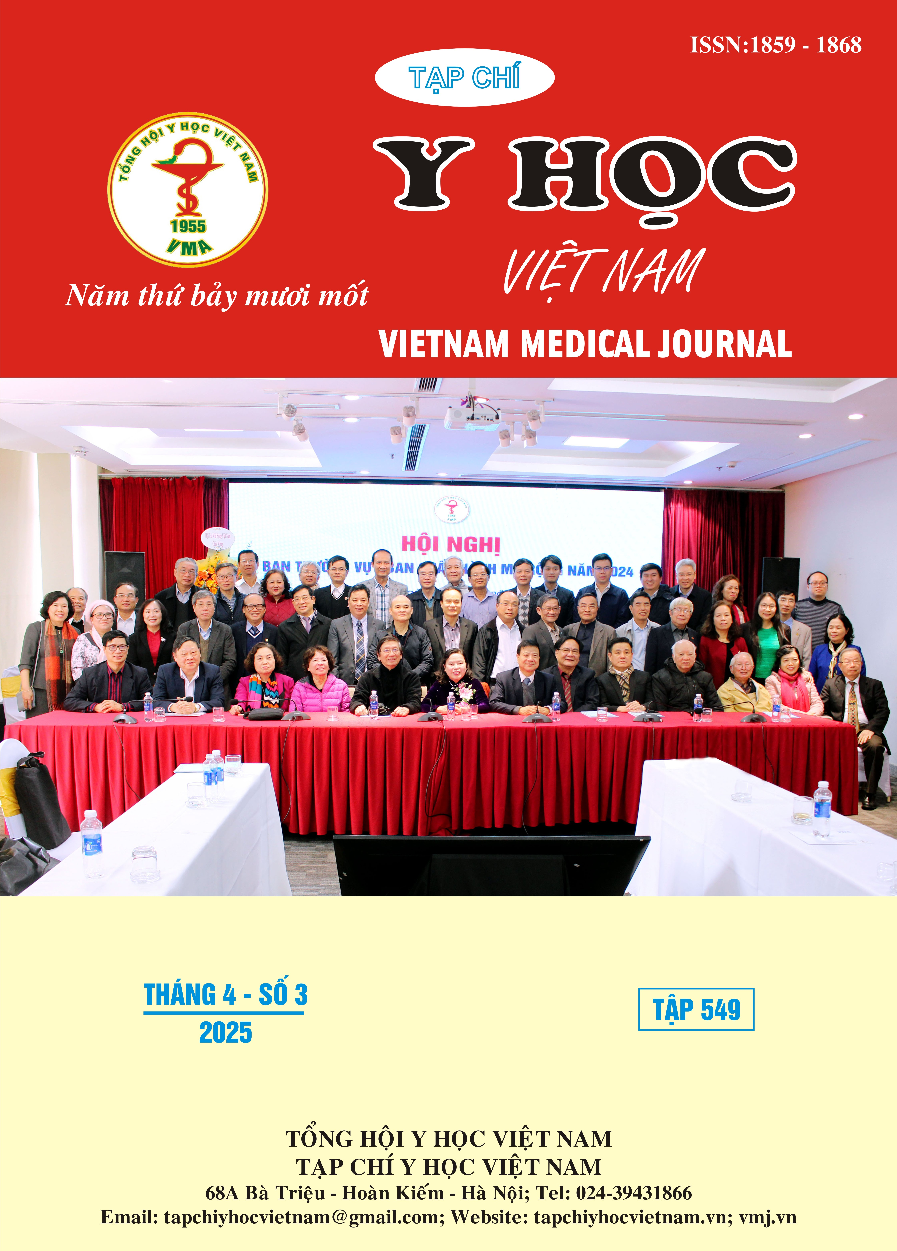CLINICAL CHARACTERISTICS OF SYSTEMIC SCLEROSIS AT THE NATIONAL HOSPITAL OF DERMATOLOGY AND VENEREOLOGY
Main Article Content
Abstract
Systemic sclerosis (SSC) is the second most common autoimmune disease after systemic lupus erythematosus. This retrospective and prospective cross-sectional study was conducted on 81 SSC patients to describe some clinical characteristics of the disease at the National Hospital of Dermatology and Venereology. The results showed that the proportion of female patients was 75.3%, the average age was 49.81 ± 12.22 years. SSC with diffuse skin lesions accounted for 66.7%, and limited skin lesions accounted for 33.3%. Skin lesions included swelling of the hands and fingers (54.3%), difficulty opening the mouth (49.4%), cutaneous pigmentation disorders (49.4%), short frenulum (14.8%) and subcutaneous calcification (4.9%). The most severe skin thickening was on the fingers with mRSS score of 3.56 ± 1.21 points, 2.84 ± 1.46 points for the hands, and the least thickened skin was on the thighs and abdomen. 65.4% of patients had mRSS score above 14 points. Extremity lesions included Raynaud's phenomenon (90.1%), pitting scars on the fingertips (63%), ulcers on the fingertips (18.5%), necrosis on the fingertips (13.6%), and telangiectasia (39.5%). Symptoms of pitting scars, of the respiratory and cardiovascular systems were more common in the diffuse form than in the limited form, the difference was significant with p<0.05.
Article Details
Keywords
Systemic sclerosis, anti-Scl-70 antibody, Raynaud’s phenomenon, mRSS score
References
2. Hudson M, Fritzler MJ. Diagnostic criteria of systemic sclerosis. J Autoimmun. 2014;48-49:38-41. doi:10.1016/j.jaut.2013.11.004
3. Park JS, Park MC, Song JJ, Park YB, Lee SK, Lee SW. Application of the 2013 ACR/EULAR classification criteria for systemic sclerosis to patients with Raynaud’s phenomenon. Arthritis Res Ther. 2015;17(1):77. doi:10.1186/s13075-015-0594-5
4. Khanna D, Furst DE, Clements PJ, et al. Standardization of the modified Rodnan skin score for use in clinical trials of systemic sclerosis. J Scleroderma Relat Disord. 2017;2(1):11-18. doi:10.5301/jsrd.5000231
5. Perera A, Fertig N, Lucas M, et al. Clinical subsets, skin thickness progression rate, and serum antibody levels in systemic sclerosis patients with anti-topoisomerase I antibody. Arthritis Rheum. 2007;56(8):2740-2746. doi:10.1002/art.22747
6. Hashimoto A, Endo H, Kondo H, Hirohata S. Clinical features of 405 Japanese patients with systemic sclerosis. Mod Rheumatol. 2012; 22(2):272-279. doi:10.1007/s10165-011-0515-7
7. Walker UA, Tyndall A, Czirják L, et al. Clinical risk assessment of organ manifestations in systemic sclerosis: a report from the EULAR Scleroderma Trials And Research group database. Ann Rheum Dis. 2007;66(6):754-763. doi:10.1136/ard.2006.062901
8. Keen KJ, Eeden SF van, Dunne JV. Limited Cutaneous and Diffuse Cutaneous Scleroderma: Circulating Biomarkers Differentiate Lung Involvement. Rheumatol Curr Res. 2012;0(0):1-7. doi:10.4172/2161-1149.S1-006
9. Phạm Thị Tuyến. Nghiên cứu đặc điểm lâm sàng, cận lâm sàng, mối liên quan giữa tổn thương da với nội tạng ở bệnh nhân xơ cứng bì hệ thống. Luận văn tốt nghiệp bác sỹ chuyên khoa II; 2012.
10. Hasegawa M, Imura-Kumada S, Matsushita T, Hamaguchi Y, Fujimoto M, Takehara K. Anti-topoisomerase I antibody levels as serum markers of skin sclerosis in systemic sclerosis. J Dermatol. 2013;40(2):89-93. doi:10.1111/1346-8138.12030


